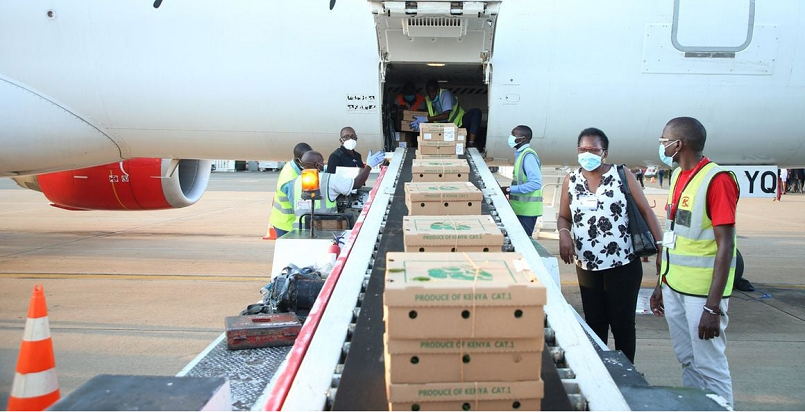Loading cargo at the Kisumu International Airport. FILE PHOTO | NMG
Uganda remained the largest market for Kenyan goods in 2023, with earnings crossing the KSh100 billion (UShs2.89 trillion) mark for the first time, according to data collated by the Central Bank of Kenya.
Traders earned KSh127.24 billion from orders they trucked to the land-locked country on increased demand for cement clinkers. Exports to Uganda, Kenya’s largest trading partner, are estimated to have climbed 31.94 percent jump over the previous year’s KSh96.43 billion.
The jump in exports against an import bill of KSh37.93 billion widened the trade surplus by 2.5 times to KSh89.31 billion year-on-year, according to the CBK’s provisional data.
Exports to Tanzania grew 21.16 percent in the review period to KSh68.55 billion against an import bill of KSh43.05 billion. Orders from Tanzania were late last year largely driven by re-exports of kerosene-type jet fuel.
The data shows exports to DR Congo, which joined the East African Community bloc in 2022, grew at the fastest pace of 48.49 percent to KSh26.45 billion.
Demand from DRC was largely driven by increased orders for “wheat flour, food preparations and preparations of organic-surface active agents”, according to the latest report from KNBS.
Record Earnings
Kenya’s earnings from goods exported to African countries exceeded expenditure on imports by a record KSh164.04 billion in 2023, boosting the government’s renewed push for integration of markets on the continent.
The value of goods sold to other countries in the continent amounted to KSh431.89 billion last year, a growth of 22.99 percent over KSh351.16 billion the year before.
The increased earnings came at a time when expenditure on imports remained largely flat, rising a measly 0.31 percent to KSh267.86 billion, according to data collated by the Central Bank of Kenya.
The slimmest rise in the value of merchandise orders since the Covid-induced fall in 2020 helped nearly double (94.98 percent) Kenya’s surplus in trade with continental peers last year from KSh84.13 billion a year earlier.
Export earnings were largely lifted by increased demand for cement clinkers, lubricants, wheat flour, food preparations, and re-exports of kerosene-type jet fuel, an analysis of leading economic indicators for 2023 suggests.
The higher demand largely came from Uganda, the Democratic Republic of the Congo, Tanzania, Egypt, Somalia, and South Sudan.
President William Ruto has taken a leading role in championing the removal of trade barriers among African countries to ease the movement of goods, services, and labour through the integration of regional trading blocs.
The integration is aimed at creating the world’s largest single market of about 1.4 billion people with an estimated economic output of more than $3 trillion (about Sh474 trillion under prevailing conversion rates) under the ambitious African Continental Free Trade Agreement (AfCFTA).
Dr Ruto has particularly been aggressively rallying his counterparts on the continent to adopt a payment system that facilitates settlement of intra-African trade deals in national currencies as a first step towards reducing reliance on the US dollar in intra-Africa trade.
“Technology is going to play a big role, making sure that our business people are not unnecessarily encumbered by looking at that currency and this currency to be able to trade. We will try and see whether we can take that out of the equation so that they can concentrate on enhancing trade between our countries,” the President said on November 7, last year.
-Business Daily





